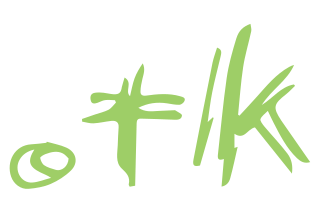
The Internet Corporation for Assigned Names and Numbers is a global multistakeholder group and nonprofit organization headquartered in the United States responsible for coordinating the maintenance and procedures of several databases related to the namespaces and numerical spaces of the Internet, ensuring the Internet's stable and secure operation. ICANN performs the actual technical maintenance work of the Central Internet Address pools and DNS root zone registries pursuant to the Internet Assigned Numbers Authority (IANA) function contract. The contract regarding the IANA stewardship functions between ICANN and the National Telecommunications and Information Administration (NTIA) of the United States Department of Commerce ended on October 1, 2016, formally transitioning the functions to the global multistakeholder community.

In the Internet, a domain name is a string that identifies a realm of administrative autonomy, authority or control. Domain names are often used to identify services provided through the Internet, such as websites, email services and more. Domain names are used in various networking contexts and for application-specific naming and addressing purposes. In general, a domain name identifies a network domain or an Internet Protocol (IP) resource, such as a personal computer used to access the Internet, or a server computer.
A domain name registry is a database of all domain names and the associated registrant information in the top level domains of the Domain Name System (DNS) of the Internet that enables third party entities to request administrative control of a domain name. Most registries operate on the top-level and second-level of the DNS.

Verisign, Inc. is an American company based in Reston, Virginia, that operates a diverse array of network infrastructure, including two of the Internet's thirteen root nameservers, the authoritative registry for the .com, .net, and .name generic top-level domains and the .cc country-code top-level domains, and the back-end systems for the .jobs and .edu sponsored top-level domains.
A domain name registrar is a company, person, or office that manages the reservation of Internet domain names.
A domain name scam is a type of intellectual property scam or confidence scam in which unscrupulous domain name registrars attempt to generate revenue by tricking businesses into buying, selling, listing or converting a domain name. The Office of Fair Trading in the United Kingdom has outlined two types of domain name scams which are "Domain name registration scams" and "Domain name renewal scams".

.tk is the Internet country code top-level domain (ccTLD) for Tokelau, a territory of New Zealand in the South Pacific.

.au is the Internet country code top-level domain (ccTLD) for Australia. It was created on 5 March 1986. Domain name policy is managed by .au Domain Administration (auDA). As of July 2018, the registry is operated by Afilias.

.ae is the country code top-level domain (ccTLD) in the Domain Name System of the Internet for the United Arab Emirates. It is administered by .aeDA which is part of the Telecommunications and Digital Government Regulatory Authority of UAE (TDRA).

.co is the Internet country code top-level domain (ccTLD) assigned to Colombia.

The domain name pro is a generic top-level domain in the Domain Name System of the Internet. Its name is derived from professional, indicating its intended use by certified professionals.

.so is the internet country code top-level domain (ccTLD) for Somalia. After a long absence, the .so domain was officially relaunched on November 1, 2010, by .SO Registry, which is regulated by the nation's Ministry of Posts and Telecommunications. It was launched through various accredited registrars around the world.
WHOIS is a query and response protocol that is used for querying databases that store an Internet resource's registered users or assignees. These resources include domain names, IP address blocks and autonomous systems, but it is also used for a wider range of other information. The protocol stores and delivers database content in a human-readable format. The current iteration of the WHOIS protocol was drafted by the Internet Society, and is documented in RFC 3912.
RegisterFly was a New Jersey (U.S.) based internet hosting and domain name registrar that had their ICANN-accredited status terminated in March 2007.
Domain drop catching, also known as domain sniping, is the practice of registering a domain name once registration has lapsed, immediately after expiry.

.au Domain Administration (auDA) is the policy authority and industry self-regulatory body for the .au domain, which is the country-code top-level domain (ccTLD) for Australia. It was formed in 1999 to manage the .au ccTLD with the endorsement of the Australian Government and the authority of the Internet Corporation for Assigned Names and Numbers (ICANN). It is a not-for-profit membership organisation that promotes and protects the .au domain space.
A landrush period is the time during which domain names are available for registration, usually to a closed group, to entities that do not own a trademark in the name they wish to register, for example generic terms like loan or car, and thus would not qualify for registration during the sunrise period. Orders may or may not be treated on a first-come-first-served basis. This period follows the sunrise period just after the launch of a new top-level domain or second-level domain during which, for example, owners of trademarks may register a domain name containing the owned mark, but a landrush period precedes a period of general availability, when any qualifying entity can register any name on a first come first-served basis.
Domain registration is the process of acquiring a domain name from a domain name registrar.

.kiwi is an Internet generic top-level domain with emphasis on New Zealand. It employs the colloquial term kiwi, used to refer to New Zealanders. It is the first, and presently only, New Zealand-specific top level domain name approved by ICANN.
Brandon Gray Internet Services, Inc., doing business as "NameJuice.com," was an ICANN accredited domain name registry operator based in Markham, Ontario. The company is in the business of registering, renewing and transferring Internet domains and subdomains. The company and its re-sellers have become notorious for domain name scams.










